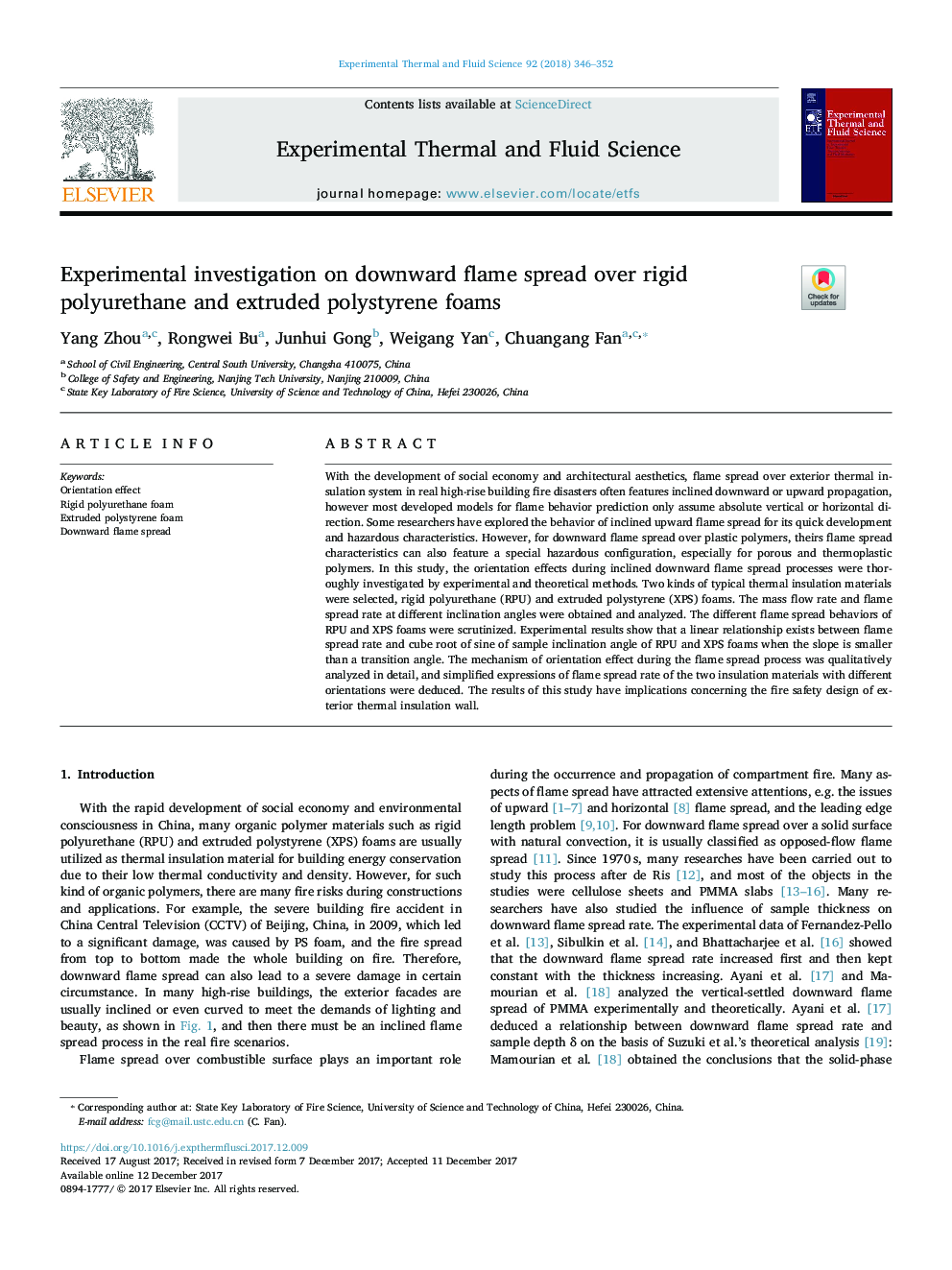| Article ID | Journal | Published Year | Pages | File Type |
|---|---|---|---|---|
| 7051852 | Experimental Thermal and Fluid Science | 2018 | 7 Pages |
Abstract
With the development of social economy and architectural aesthetics, flame spread over exterior thermal insulation system in real high-rise building fire disasters often features inclined downward or upward propagation, however most developed models for flame behavior prediction only assume absolute vertical or horizontal direction. Some researchers have explored the behavior of inclined upward flame spread for its quick development and hazardous characteristics. However, for downward flame spread over plastic polymers, theirs flame spread characteristics can also feature a special hazardous configuration, especially for porous and thermoplastic polymers. In this study, the orientation effects during inclined downward flame spread processes were thoroughly investigated by experimental and theoretical methods. Two kinds of typical thermal insulation materials were selected, rigid polyurethane (RPU) and extruded polystyrene (XPS) foams. The mass flow rate and flame spread rate at different inclination angles were obtained and analyzed. The different flame spread behaviors of RPU and XPS foams were scrutinized. Experimental results show that a linear relationship exists between flame spread rate and cube root of sine of sample inclination angle of RPU and XPS foams when the slope is smaller than a transition angle. The mechanism of orientation effect during the flame spread process was qualitatively analyzed in detail, and simplified expressions of flame spread rate of the two insulation materials with different orientations were deduced. The results of this study have implications concerning the fire safety design of exterior thermal insulation wall.
Related Topics
Physical Sciences and Engineering
Chemical Engineering
Fluid Flow and Transfer Processes
Authors
Yang Zhou, Rongwei Bu, Junhui Gong, Weigang Yan, Chuangang Fan,
